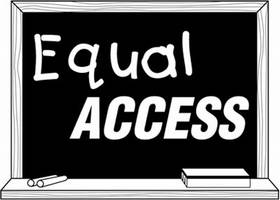In my never ending quest for Truth, Justice and the
American way, oh wait, I mean teaching kids how to think, not what to think
(which should lead to truth, justice and the American way), and to provide
curriculum that is “challenging, exploratory, integrative (I had to look
‘integrative’ up, but now that I know what it means, I am in) and relevant,” I
am always in search of great new resources and topics to get kids thinking and
writing.
The focus of my search is to find hot topics that get
kids to debate, collaborate and negotiate.
Using their natural enthusiasm for arguing, and the SCAN critical
thinking strategy, my objectives are to:
1. Make curriculum relevant by connecting
standards to real world events
2. Use
the right questions to go beyond the standard who, what, where, when and why
3. Provide
great resources for finding kid-friendly articles
4. Provide
a tool that pulls 1-3 together and allows students to share their work globally
(the SCAN tool at
TregoED.org is free and does just that!)
Recently, I worked with a 6th grade class
at the Mt. Olive Middle school and helped them develop their own topics for
critical thinking (SCAN) scenarios. SCAN
is an acronym for four critical thinking questions that goes beyond the 5 W’s
and can help students take apart complex problems, look at other perspectives
and collaborate on viable solutions.
(Training our future world leaders – imagine if our leaders right now
worked on some of the very serious and complex issues with a visible strategy
and respect for different perspectives?
But I digress…..)
Lesson
plan and resources to get them thinking
Groups of four students worked collaboratively on a template
shared through google docs. The template
asks for a summary of the scenario, four different perspectives and short
constructed paragraphs for each point of view.
While I was armed with some suggestions for hot topics in the news, they
preferred topics that were closer to home! (Funny, I tried to steer some
teachers this summer into doing a SCAN on The African Lion Hunt, and they, too,
preferred to write their own on a topic close to home – Blizzard Bags –or
Should Schools embrace Edays? Check the SCAN
library for the lesson they wrote).
This was the plan:
1. In
groups of four, find a topic that people with different viewpoints were talking
about. This could be posed as a question
(ex. Should we have four day work
weeks?)
2. Identify
four roles (stakeholders) with differing viewpoints.
3. Together,
write a short introductory paragraph for the scenario, including some of the
viewpoints.
4. Individually
research a point of view, find evidence that supports it and record the link.
(Sometimes, I provide articles, sometimes they have to find their own).
5. Individually,
write a short constructed response for each perspective. Each perspective should include 3 issues or
ideas that is important to them with supporting evidence or reasons.
6. Provide
links to articles that provide evidence or reasoning for that point of view.
Here are the topics that the students chose to
research and write for SCAN lessons along with links you can provide to kids as
informational text. You can have your
students work through the SCAN questions in an online discussion by setting up
the lessons from the SCAN library, or have them write their own.
Should
we have longer lunch?
Should
we have recess in Middle School?
Do
we need a double period of Language Arts?
What
should we do about our aging technology?
Should
MS students be allowed to select their own schedules?
Highly
motivated by the relevant topics and the knowledge that their work would be
shared with me and the rest of the world through the SCAN tool’s library, the students worked diligently to complete their
scenarios, which were then posted in the SCAN tool. Why not have your students check out and
evaluate their lessons? Or better yet, challenge
them to write their own? Select topics
in your subject area and get them writing and thinking!








